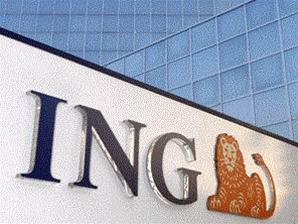The online bank, which claims to have over 1.25 million customers in Australia, made the ‘brave decision’ to redesign its systems 18 months ago to support the future growth expectations laid out by CEO, Eric Drok, according to the bank’s head of business intelligence and analytics, Steve Bennett.
Its online direct model created double-digit growth and ‘incredible exposure’ for the bank in its first ten years, according to Bennett.
“The [business] model works, but as we grow more complex we needed to be able to rely on our ability to leverage information as a core strategic capability,” said Bennett.
Over the years, the information platform evolved very rapidly but in a largely ad hoc way.
At the same time, ING Direct also wanted to shift its analytics focus from 'looking in the rear view mirror to concentrating on how we put in a predictive capability', said Bennett.
After joining ING Direct from Gartner, Bennett immediately started work on the platform redesign. Rather than re-invent the wheel, he reached out to ‘a few’ of ING Direct’s other global franchises and asked for their data models.
“We looked for best practices and how they might apply to our situation,” said Bennett.
ING Direct’s platform rebuild includes an Oracle database, Informatics ETL, upgraded Business Objects/SAS business intelligence and analytics software, and Microsoft’s Performance Point Server.
“We’ve spent a lot of time looking at how we can present the information,” explained Bennett.
“The primary end user tool is SAS/Business Objects, but we’re also experimenting with the idea of mash-ups.”
Bennett said the bank was evaluating the Ruby-based Webby technology to deliver the information mash-ups.
“We’re just beginning to dip our toes in,” said Bennett.
“For example, we’re looking to introduce sparkle lines to enable us to pack a new dimension into limited screen real estate space. It’s a way of increasing the usefulness of that Webby report or object to the end user, but if you do that two or three times it means you can get much more bang from your investment.”
Sparkle lines use an algorithm to convert a set of figures into a font. Bennett demonstrated how this could enable ING Direct to squeeze an additional line diagram or simple graph into an existing analytics report, thereby making it that little bit more useful.
Making use of screen real estate is particularly important as users increasingly access reports on small screen devices such as mini-laptops and smartphones.
“Our most successful analytics report is a daily text report on how the business performed as of close of business the previous day that is delivered to Blackberries,” said Bennett.
Bennett was speaking as part of the DW 2.0 event in Sydney.



_(20).jpg&h=140&w=231&c=1&s=0)
.png&h=140&w=231&c=1&s=0)







 iTnews Executive Retreat - Security Leaders Edition
iTnews Executive Retreat - Security Leaders Edition











_(1).jpg&h=140&w=231&c=1&s=0)



